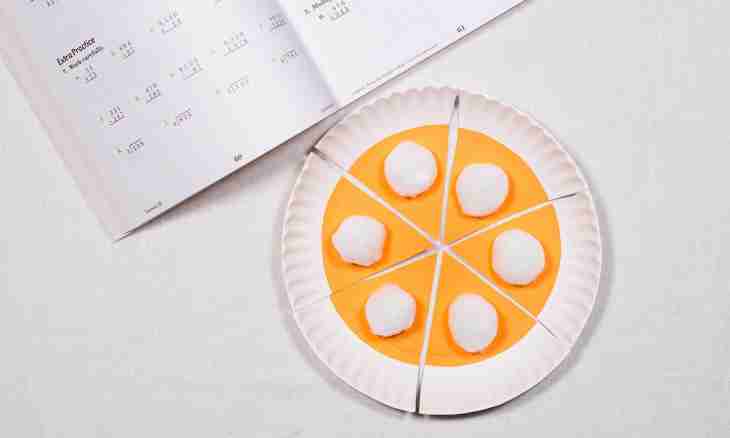In a record form the fractional numbers are divided into decimal and ordinary. Ordinary, in turn, can be written down in a format of the wrong or mixed fractions. Often the numbers which are written down in different formats are involved in mathematical operations with common fractions.
Instruction
1. If the common fraction has to be increased by an integer, then in numerator of the resulting fraction there has to be a numerator of initial fraction increased by an integer, and the denominator has to be left without changes. For example, if it is necessary to increase 4/7 by 5, then numerator will be 4*5=20, and number 5, that is 4/7 * 5 = 20/7 will remain a denominator.
2. If it is necessary to multiply two common fractions, then in numerator of result there has to be a work of numerators of both fractions, and in a denominator - the work of their denominators. For example, if it is necessary to increase 4/7 by 2/3, then numerator will be 4*2=8, and a denominator 7*3=21, that is 4/7 * 2/3 = 8/21.
3. If the common fraction (multiplicand) needs to be increased by the fraction which is written down in the mixed look (multiplier), then the multiplier at first should be given to a type of an improper fraction. For this purpose the whole part should be increased by a denominator and to add the received result to numerator. For example, if a multiplicand is the common fraction 4/7, and a multiplier - the mixed fraction 3 2/3, then after transfer to the wrong look the multiplier will look as 11/3. Then both fractions should be multiplied as it was described in the previous step, that is to increase multiplicand numerator by multiplier numerator, and a multiplicand denominator on a multiplier denominator: 4/7 * 3 2/3 = 4/7 * 11/3 = 44/21 = 2 2/21.
4. At multiplication of a common fraction by fraction decimal, it is necessary to lead a multiplier to a type of a common fraction if the result has to be presented in the form of a common fraction too. In numerator of a multiplier there will be a decimal number from which it is necessary to withdraw a comma, and in a denominator - number ten built in the degree equal to the number of figures after a comma. For example, if a multiplicand is the common fraction 4/7, and a multiplier - decimal fraction 2.34, then a multiplier it is necessary to lead to a look 234/100. After that the fraction needs to increase in the usual way - multiplicand numerator by multiplier numerator, a multiplicand denominator on a multiplier denominator. That is 4/7 * 2.34 = 4/7 * 234/100 = 936/700 = 234/175 = 1 59/175.

